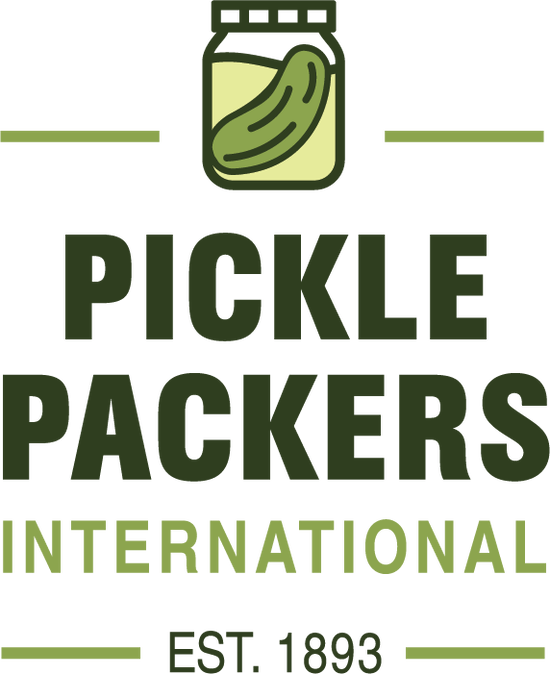Process
What is Pickle Packing?
Most pickles are produced by one of three methods: refrigerated, fresh-pack, or processed (also called “cured” or “fermented”). Each of these methods creates distinct flavors and textures. During production, a variety of flavors are achieved by adding different herbs, spices, and seasonings to the pickle liquid. Each variety is generally packed whole or cut into halves, spears, sticks, chips, chunks, salad cubes, or relish, or sliced lengthwise for sandwiches.
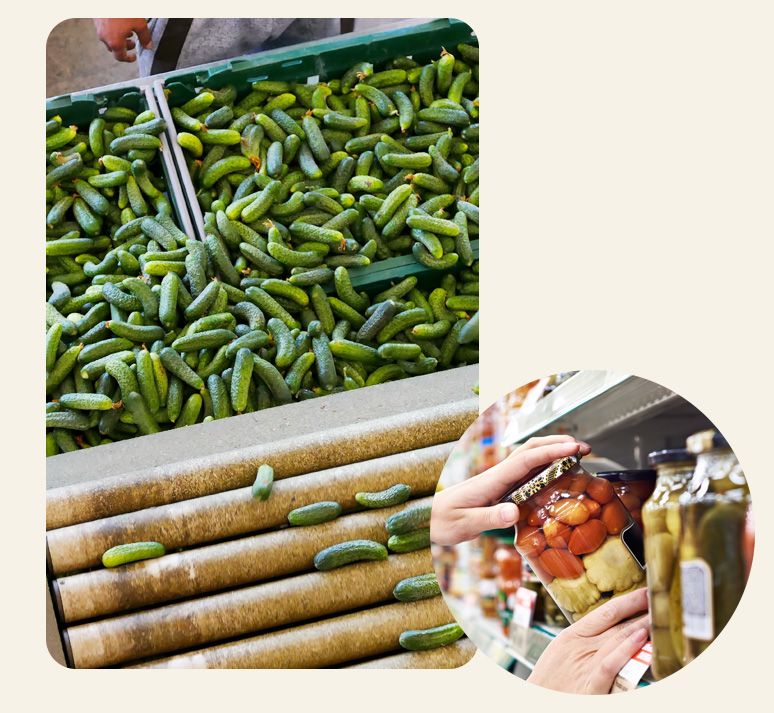
Production Methods
Refrigerated
Fresh, clean cucumbers are placed into jars, covered with a seasoned pickling liquid, and immediately refrigerated. The entire fermentation process takes place under refrigeration. Once the cucumbers have absorbed the seasonings, the pickles are shipped. These extra-crispy pickles are available in the refrigerated section of the supermarket and are marked with an expiration date, as their shelf life is shorter than that of processed or fresh-pack pickles. They must also be refrigerated at home.
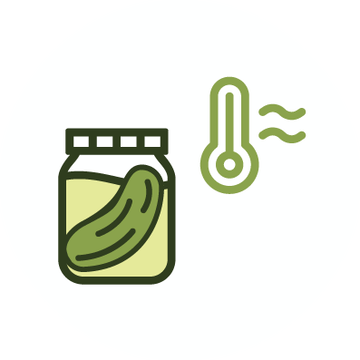
Fresh Pack
Fresh, clean cucumbers are placed directly into jars and covered with a pickling solution made of vinegar and seasonings, depending on the variety of pickles being produced. The containers are vacuum-sealed, quickly heated to pasteurize, and then cooled. Fresh-pack pickles are generally crispier and less acidic than processed pickles. They also retain some of the flavor and color of fresh cucumbers. Jars of fresh-pack pickles will say “fresh pack” on the label.
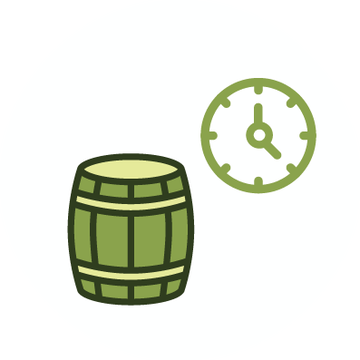
Processed
Clean cucumbers are placed in a salt brine solution in large tanks, where they undergo full fermentation over the course of one to three months. The salt is added gradually throughout the process so it permeates the cucumbers evenly. Once fermented, the pickles are removed from the tanks, rinsed of excess salt, and placed into jars with additional seasonings. Processed pickles have a sharper flavor and are usually dark green and somewhat translucent.
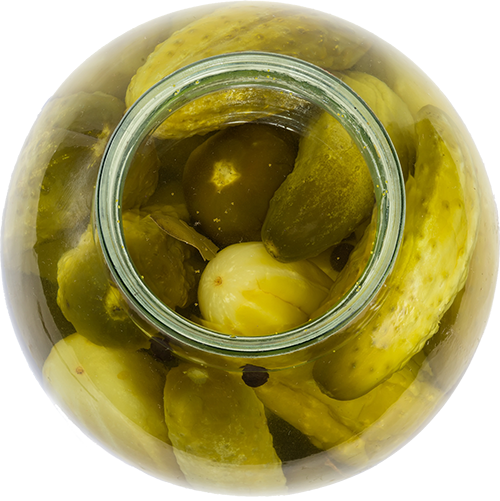
DID YOU KNOW?
Pickles are traditionally hand packed because machines can’t pack as many pickles in a jar as a person can.
Growing Pickles
Approximately 100,000 to 125,000 acres are devoted to growing pickling cucumbers in the United States. These cucumbers are grown in more than 30 states, with the largest producers being California, Colorado, Florida, Indiana, Michigan, Ohio, North Carolina, South Carolina, Texas, and Wisconsin.
More than 15,000 acres are used to grow pickling peppers. While this may seem small in comparison, the acreage increases each year.
For pickling cucumbers, there is typically a spring and fall harvest, depending on the geographic location. Peppers, on the other hand, yield one crop per year.
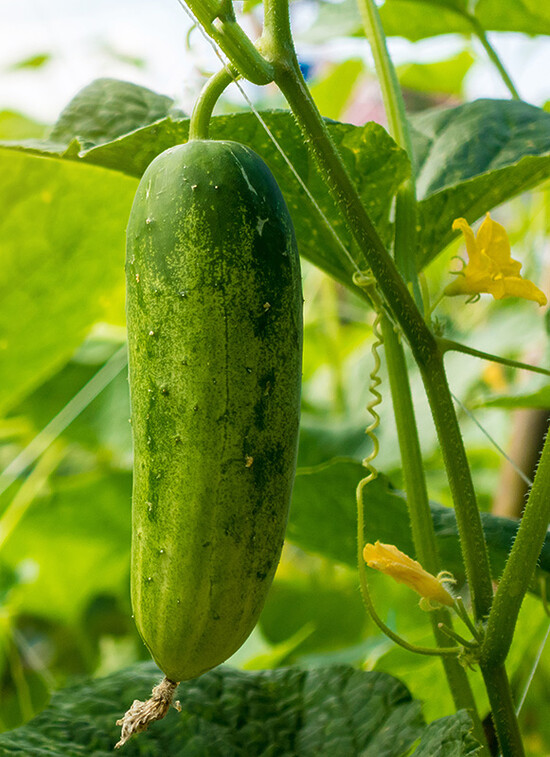
From Plant to Plate
Follow the journey of a pickle from plant to bushel.
Original Source: A.T. Buzby Farm
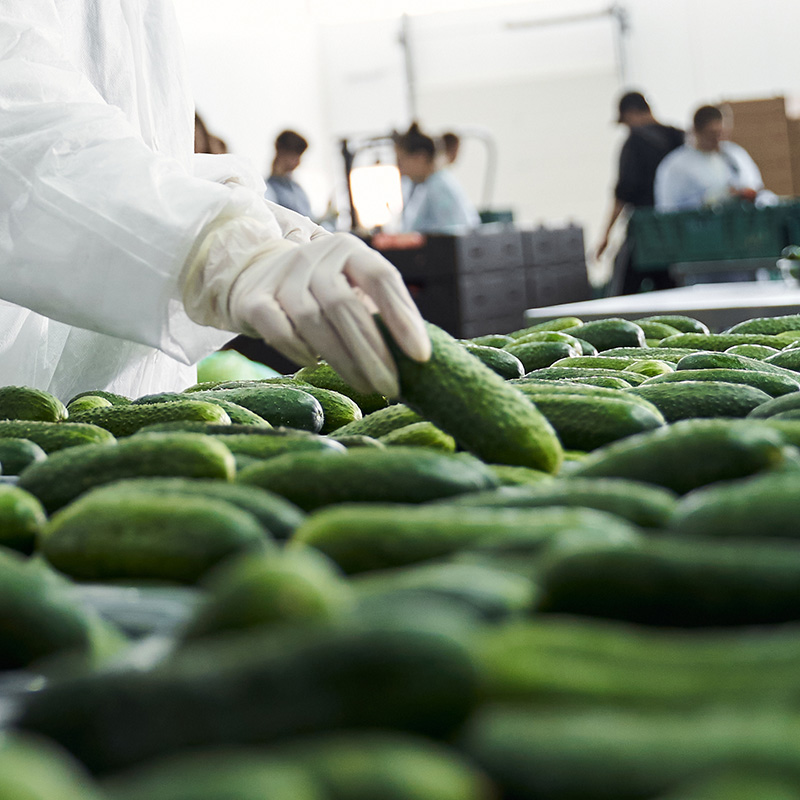
Ensuring Food Safety in the Pickled Vegetable Industry
PPI is committed to ensuring food safety in the pickled vegetable industry. The FDA regulates all pickled vegetable products in the U.S., and the industry employs rigorous quality control measures, including cleaning and pasteurization, to deliver safe, high-quality products. PPI invests in research on food processing and agricultural practices and actively promotes Good Agricultural Practices (GAP) standards. Recognizing the inherent food safety benefits of the pickling process, PPI has developed a tailored GAP program to support grower compliance and competitiveness in the marketplace.

